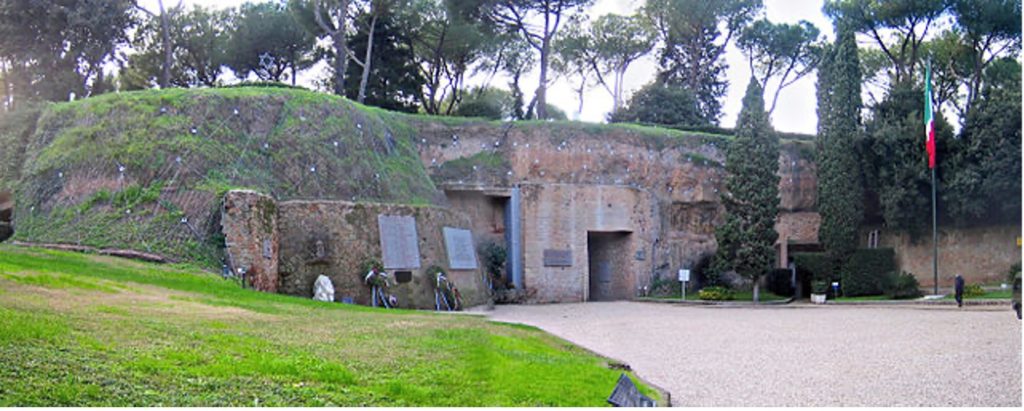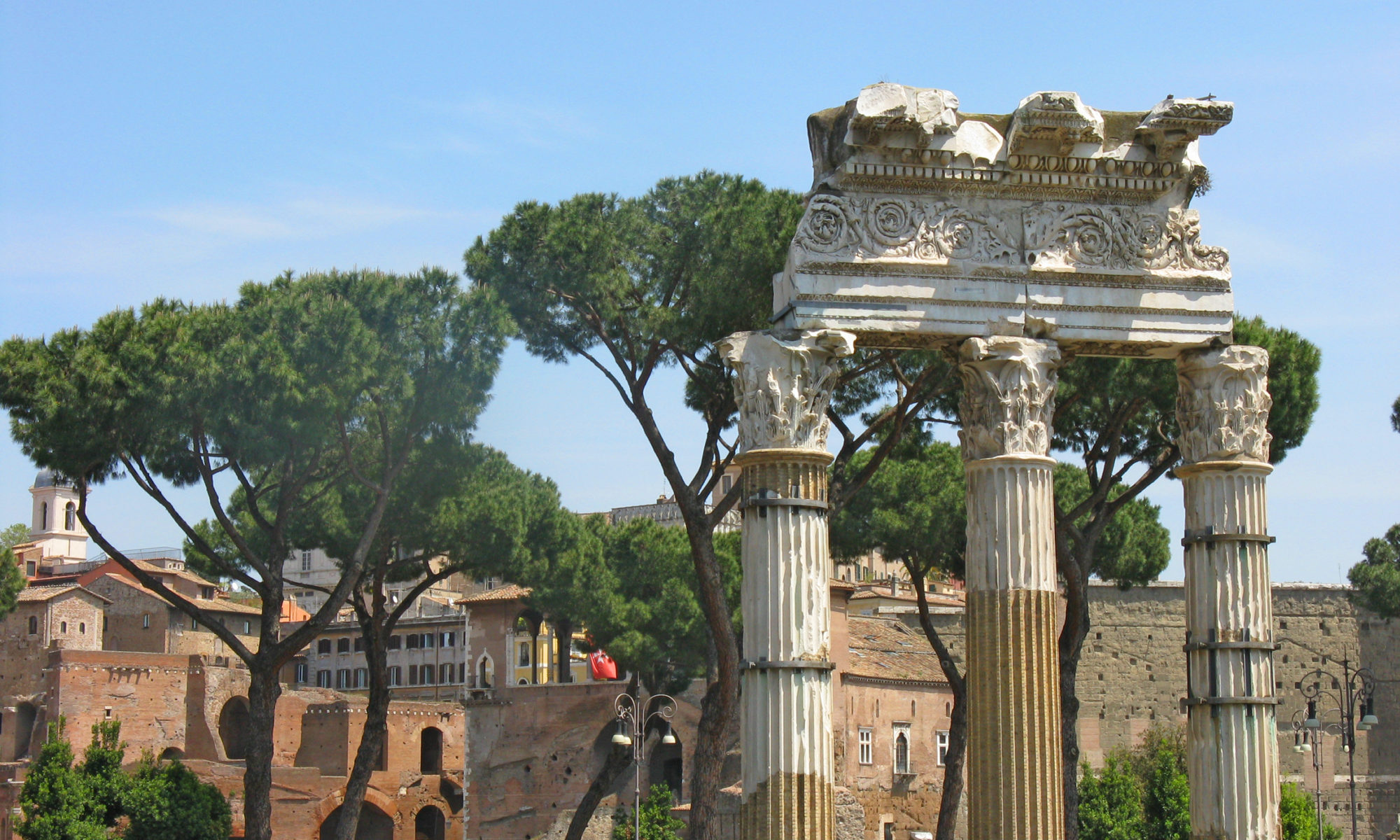
De Profundis clamavi ad te, Domine
Psalm 130
Domine, exaudi vocem meam
Out of the depts have I cried unto thee, o Lord
Lord, hear my voice
The Mausoleo delle Fosse Ardeatine, the memorial cemetery honouring the victims of the Ardeatine Caves Massacre that took place on 24 March 1944, is set in tranquil surroundings that belie the horrors hidden until July 1944 within its network of tunnels.
Silvia, our guide, began with a brief history. A puppet regime headed by Mussolini had been set up in Salò on Lake Garda. The Nazis were in control of Rome. On 23 March 1944, the twenty-fifth anniversary of the founding by Mussolini of the first Fascist organisation in Milan, a group of partisans detonated a rubbish cart containing explosive in via Rasella as a unit of Nazi Order Police marched down the street. The Nazi reaction to the carnage was swift and ruthless: ten Italians for every German policeman killed were to be shot in reprisal.
This meant that a total of 330 men had to be put to death. Most of them were Italians serving sentences in the Regina Coeli prison, where a large number of the prisoners were partisans awaiting execution. Others were rounded up at random off the streets. The victims came from all walks of civilian and military life. Some were disaffected Germans who had colluded with the partisans. After lengthy bartering and negotiations, the quota was reached and an extra five were selected for good measure. The operation had to be carried out with maximum speed and efficiency, and in total secrecy. The prisoners, denied the comforts of religion in their final hour, were taken in military trucks to the Ardeatine caves. The men had their hands tied behind their backs and were shot in the back of the head. One bullet per person. No waste. As the shootings continued and the corpses piled up, the next batch of prisoners had to kneel on the bodies of the dead. It was not a straightforward process, and some of the soldiers carrying out the executions were sickened and unable to cope.
To seal the place of execution, the Nazis blew up the entrance, creating a huge chasm, the Voragine, which has now been cleared and enables the visitor to relive the experience of the victims as they were marched to their terrible death. Despite Nazi attempts to conceal the slaughter, suspicions had arisen. So many people had inexplicably disappeared. The convoy of trucks had not passed unnoticed. Shepherds in the area of the caves had heard shots, and the stench of decomposing bodies hung in the air.
In July 1944, following the arrival of Allied troops, the caves were re-opened. Brilliant forensic work led to the identification of nearly all the bodies, and families reclaimed the remains of their loved ones.
Originally pozzolana quarries, the Ardeatine caves were used as Christian catacombs. Close by is the Appian Way, dotted with the tombs of wealthy Romans. Its grim past as the place where rebel slaves were crucified en masse is well known. The whole area, in fact, is a vast burial ground; a place of bloodshed and martyrdom.
Access to the forecourt of the memorial site is through a narrow gate made entirely of twisted wood, representing a tangle of thorns. As Silvia explained, it was intended to be a difficult entrance. We were not to expect a smooth passage.
To the left, towering above the gate, is a breathtaking group of three massive statues in travertine stone, The three ages of man, the work of the sculptor Francesco Coccia. The figures – a boy, a man and an old man, all victims of the reprisal – are standing with their hands bound together behind their backs. It was shocking to read the names of a fourteen-year-old boy and a baby of two months on the list of the slain at the entrance to the tombs.
More extraordinary works of art are on display in the small museum, including a gold-plated bas-relief by Renato Guttuso and paintings by Carlo Levi and Corrado Cagli. There are also photographs, newspaper articles and other memorabilia that are well worth studying in detail.
It was a profoundly moving experience for all of us, especially when we came to the place of execution and thought of the final moments of the victims, some of whom were writhing and struggling to break free.
Our thanks go to Silvia for her enlightening and sensitive account of the massacre, and to Joanne and the Committee members who organised this remarkable tour.
Posted by Julie Dixon, Association Member

